Essentially, a spider capo is a capo that has 6 different pegs on it, that way you can pick and choose which string to which you’ve applied the capo effect. It’s pretty straightforward to do and I’ll show you all about it in this article.
To use a spider capo, turn the tightening screw counter-clockwise to widen the jaws. This makes room for you to slip the capo onto the guitar neck. Once you’ve attached the capo, turn the pegs downward to fret the string, and flip up the others where you want the string to ring open.
What Is A Spider Capo?
![Spider Capo - How to Use A Spider Capo [With Demonstrations]](https://travelingguitarist.com/wp-content/uploads/2022/03/Spider-Capo-How-to-Use-A-Spider-Capo-With-Demonstrations.jpg)
The spider capo is something I first became familiar with around 10 years ago when I started learning how to play songs from people like Antoine Dufour and Andy McKee. I think it was Antoine, specifically, who inspired me to pick one up on Amazon.
If you’re a beginner guitar player, you probably know all about how to use the regular capo. But there are almost a dozen different kinds of capos which I’ll make sure to explore at a later date.
There is the regular capo, the heritage capo, the strap capo, the spider capo, and the list goes on. Each one has its own specialty at which it excels, with the spider capo being particularly good at creating very specific tunings based on particular chords.
In simple terms, a spider capo is a capo that has six different pegs on it, essentially making it possible to pick and choose to which string you’ve applied the capo effect. The spider capo opens the door to a lot of diverse tunings and harmonies that would otherwise be impossible with a regular capo.
How Does A Spider Capo Work?
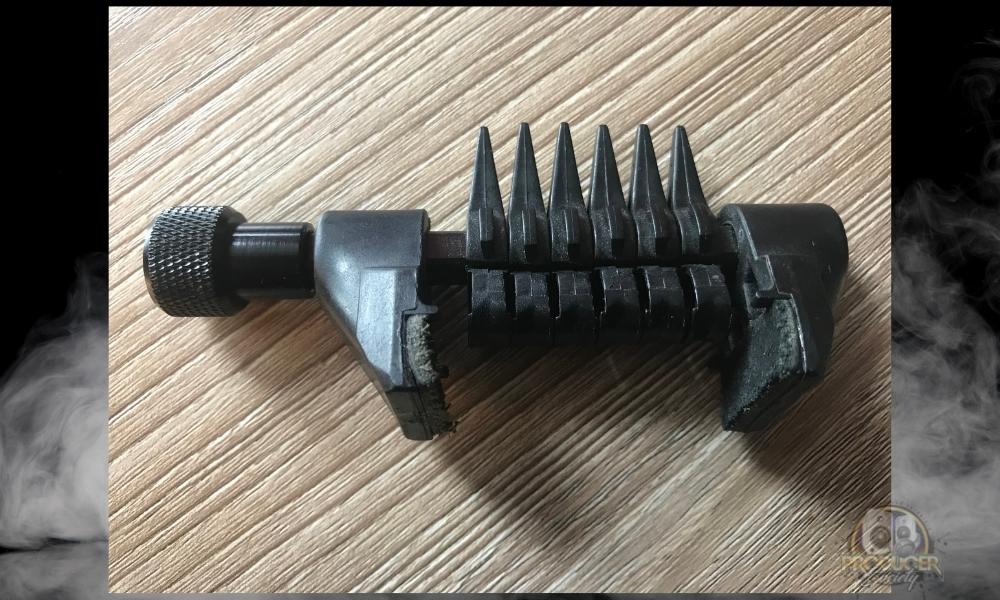
As most guitar players know, a guitar is a fretted instrument. Its construction utilizes tightly wound nickel-plated strings that are tightened enough so that after they’ve been picked, pulled, or plucked, they vibrate to a particular frequency.
The standard reference pitch that we all use is 440Hz which is A, and the strings are tuned to E-A-D-G-B-E, from lowest to the high string.
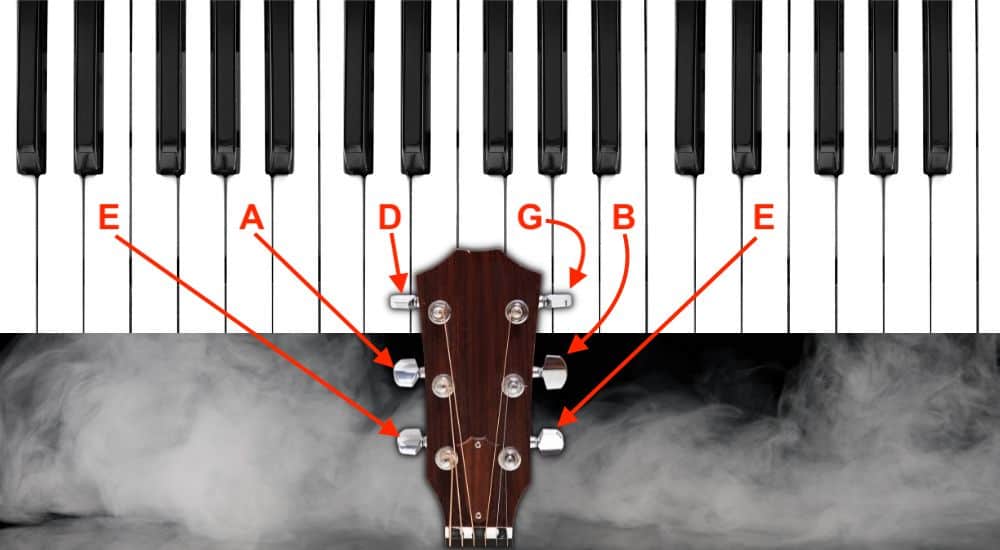
So, to make a note with the guitar, you have to press down on the guitar strings in order to shorten or lengthen the guitar string. By doing this, you either make the vibration higher or lower.
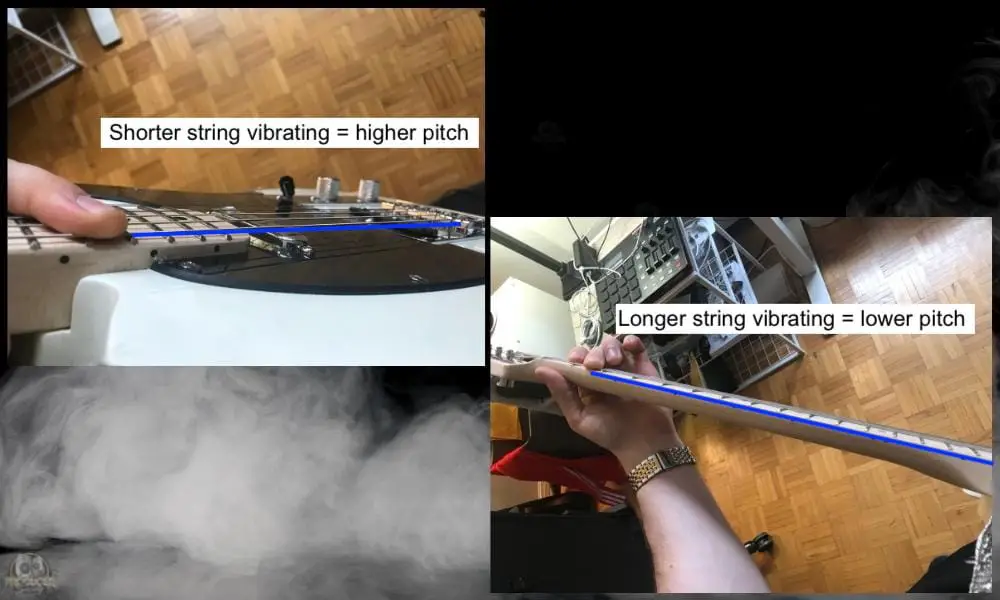
For instance, by shortening the length of a guitar string, you make it so it vibrates faster after having been plucked and it produces a higher pitch. The same thing goes for the opposite case, ie, the bass guitar.
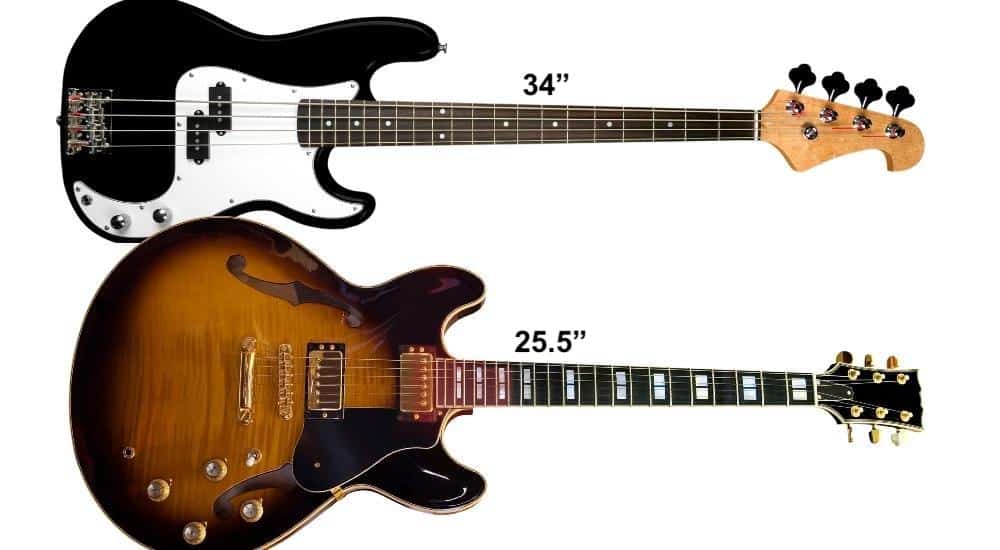
As a matter of fact, this is why the bass guitar has a much longer scale length than the regular guitar. It’s because the notes need to be much lower, therefore, the strings need to be much longer as does the neck which supports those strings.
In my article on why B-Strings Always Sound Out Of Tune, I explained how the 12-tone temperament system makes it so that we can only tune imperfectly to these notes. In other words, some notes are not exactly in tune by design.
If they were, they wouldn’t sound that good. This is something Paul David talked about extensively in his video on why John Frusciante tuned his guitar weirdly for a particular song.
In simple terms, a spider capo acts as a third hand. By fretting only certain strings on the guitar, you can create a very special tuning like an Amin7 tuning, G Major 7 tuning, or you could use it for a traditional open tuning like the Dsus4 tuning, DADGAD.
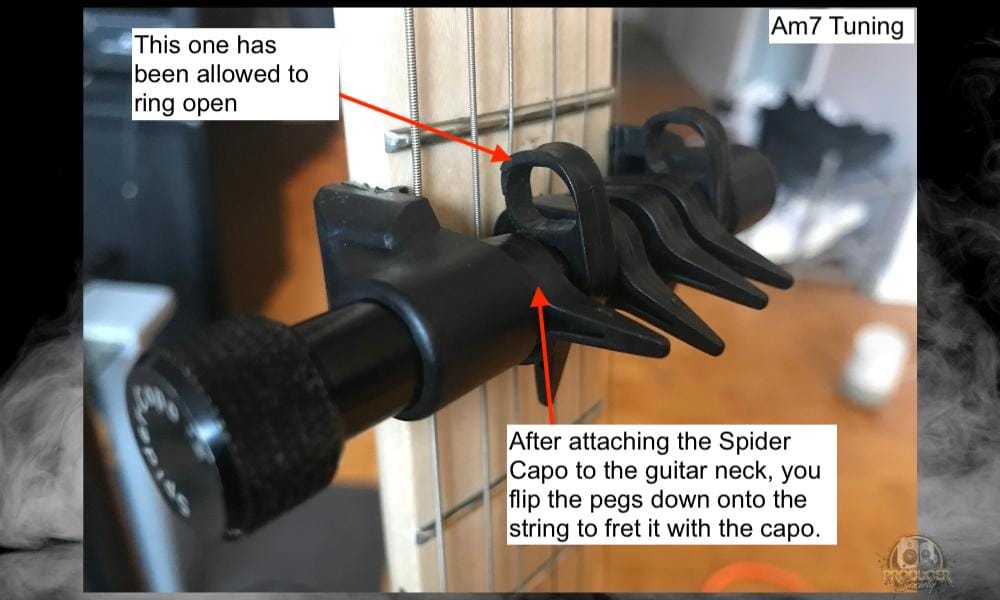
The Spider Capo website has a few examples of what tunings you can try including a few that I just mentioned. They don’t include the note names though, which is kind of annoying. They only included the frets and the chart, but I digress.
How Do You Put On A Spider Capo?
1) Turn the Thumbscrew Counter-Clockwise to Widen the Jaws
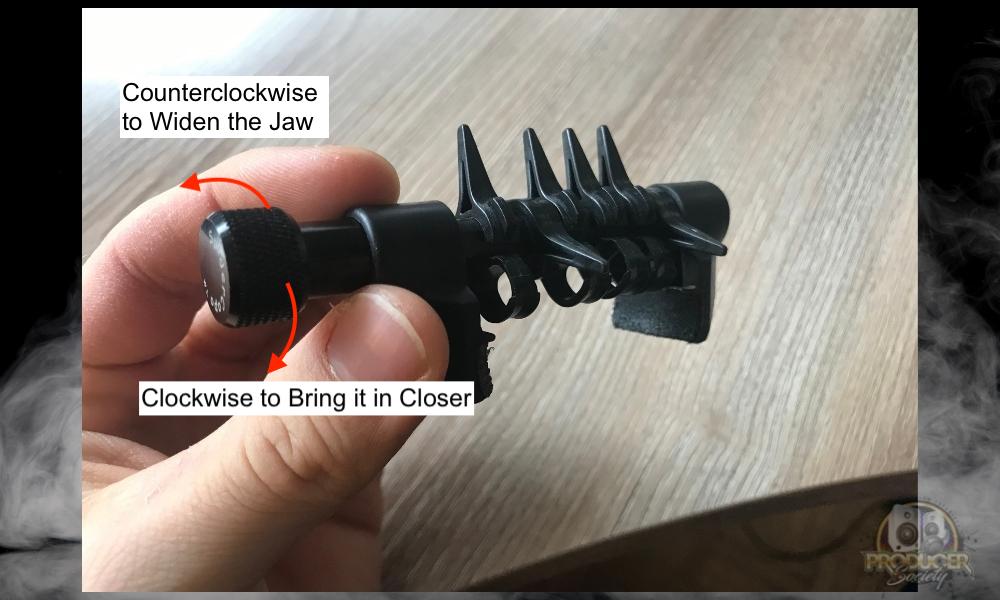
This part should be fairly self-explanatory considering it involves just a standard, screwed-on, dial that everyone should know how to use.
Turn the dial counterclockwise to make the Spider Capo’s jaws wider, that way you can fit it around the neck.
But don’t make it too wide though, because then you’ll have to spend a minute closing in the jaws on the neck.
2) Attach the Spider Capo On To Your Guitar Neck
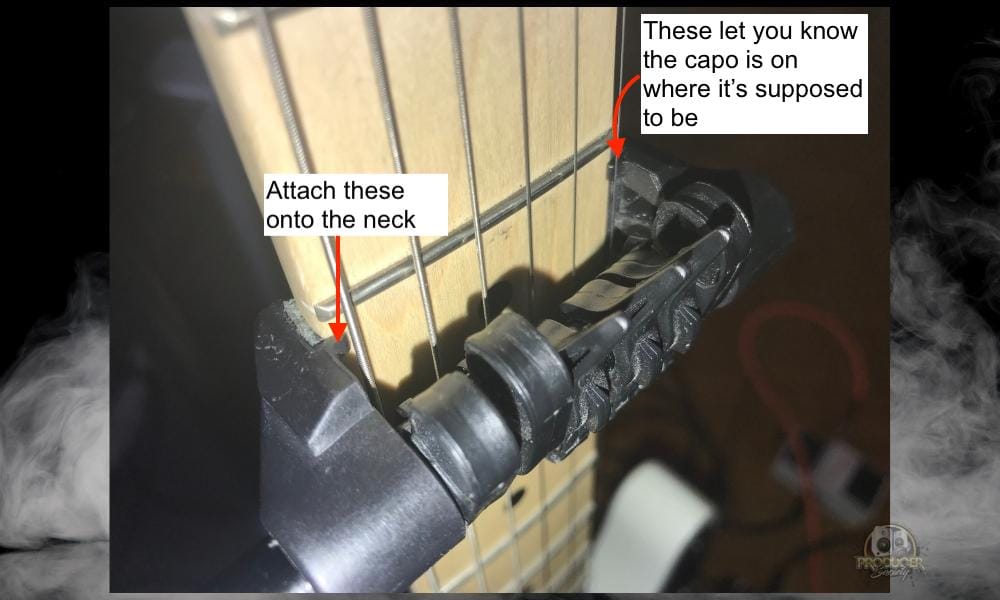
There are two tabs that hang off the left and right sides of the inside of the capo. I pointed them out in the image above.
You want to use these when you’re setting it up on your neck, otherwise, you’re going to get a different result every time you use the capo. The pegs are only a certain length, so the spider capo has to be positioned the same distance from the fretboard every time.
Tighten the knob once you’ve got it on the neck, and get it on there securely in place. There are little pads on the inside of the Spider Capo to ensure that you don’t damage the guitar neck by putting it on too tight.
I would still err on the side of caution because you don’t want to put some kind of ugly scuff or mark on your guitar. Once you’ve got the capo onto your neck, you can decide which strings you want to fret and which ones you don’t.
3) Pull Down the Pegs On the Strings To Which You Want To Apply the Capo
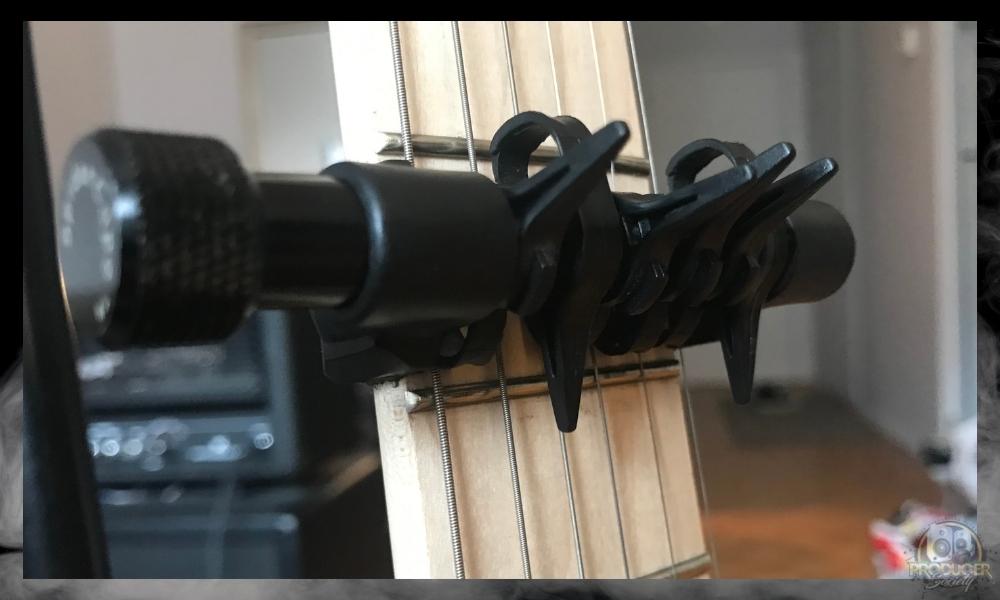
I think this is straightforward as well. Just pull down the pegs so that the fattest part is on the string. They’re shaped in such a way that it looks like a string is meant to be in the center of the peg. There is one more thing that’s important to mention about this.
Don’t Use All of the Force of the Pegs (Totally Perpendicular to the Strings)
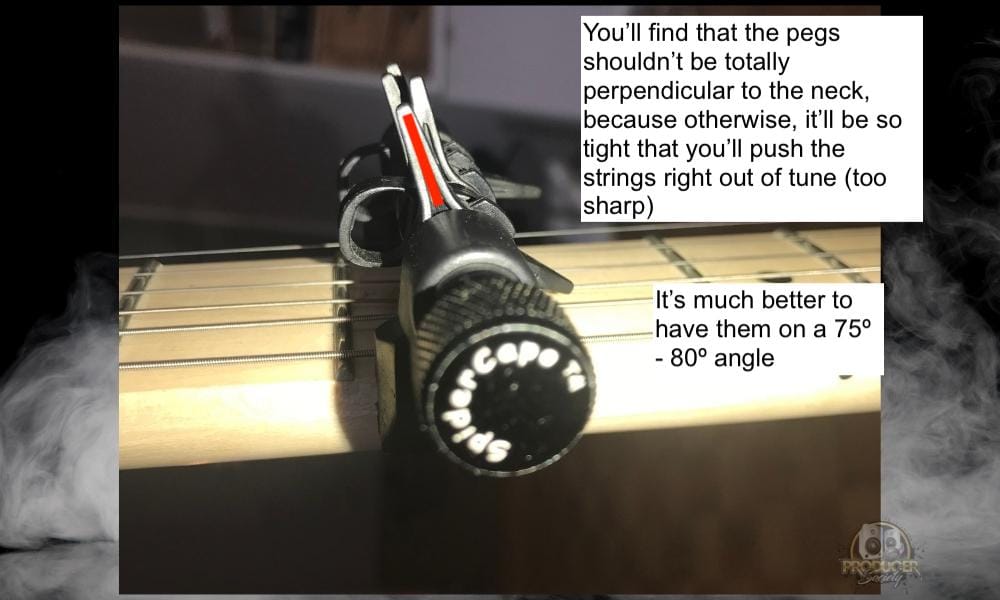
Simply put, if you pull the pegs down on the strings so they’re totally 90º from the guitar neck, they will be too sharp. This is an annoying thing to come across at first, but you’ll quickly figure it out.
There is a certain level of pressure that you need to apply in order to get the strings to fret perfectly. This will depend on your guitar, but I imagine that it won’t be entirely different between various model types.
Do Capos Damage Guitars?
Most capos won’t damage your guitar if you put them on your instrument appropriately, however, if you put them on too tight, or there is no soft barrier between the capo and the guitar, you could leave some cosmetic damage.
Then again, I guess I haven’t seen all the cheap capos out there. I imagine there are some pretty shady ones that don’t work well because they’re made out of something unusual.
I would recommend just getting a good one that way you don’t have to worry about this kind of thing. Probably one of the most popular and acclaimed capos ever is the G7 Capo. I have a Kyser Capo which is just as good though.

 Written By :
Written By :